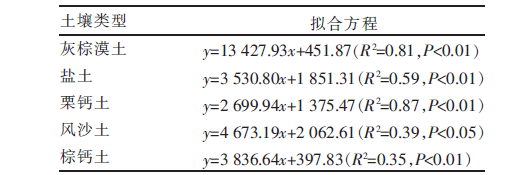| [1] |
YANG Y H, SHI Y, SUN W J, et al. Terrestrial carbon sinks in China and around the world and their contribution to carbon neutrality[J]. Science China Life Sciences, 2022, 65(5):861-895.
doi: 10.1007/s11427-021-2045-5
|
| [2] |
KELLER A B, BRZOSTEK E R, CRAIG M E, et al. Root-derived inputs are major contributors to soil carbon in temperate forests, but vary by mycorrhizal type[J]. Ecology Letters, 2021, 24(4):626-635.
doi: 10.1111/ele.13651
pmid: 33492775
|
| [3] |
赵海卫, 郭柯, 乔鲜果, 等. 青藏高原垫状驼绒藜高寒荒漠的生态地理特征[J]. 地理研究, 2017, 36(12):2441-2450.
doi: 10.11821/dlyj201712014
|
| [4] |
辛莹, 舒锴, 戴黎聪, 等. 青藏高原柴达木盆地高寒荒漠土壤有机碳空间特征[J]. 中国草地学报, 2021, 43(11):113-118.
|
| [5] |
田玉强, 欧阳华, 徐兴良, 等. 青藏高原土壤有机碳储量与密度分布[J]. 土壤学报, 2008, 45(5):933-942.
|
| [6] |
YANG Y H, FANG J Y, TANG Y H, et al. Storage, patterns and controls of soil organic carbon in the Tibetan grasslands[J]. Global Change Biology, 2008, 14(7):1592-1599.
doi: 10.1111/gcb.2008.14.issue-7
|
| [7] |
DU Y G, ZHOU G, GUO X W, et al. Spatial distribution of grassland soil organic carbon and potential carbon storage on the Qinghai Plateau[J]. Grassland Science, 2019, 65(3):141-146.
doi: 10.1111/grs.2019.65.issue-3
|
| [8] |
FENG Q, ENDO K N, CHENG G D. Soil carbon in desertified land in relation to site characteristics[J]. Geoderma, 2002, 106(1/2):21-43.
doi: 10.1016/S0016-7061(01)00099-4
|
| [9] |
薛亮, 马海州, 曹广超, 等. GIS技术在区域土壤有机碳储量估算方面的应用:以柴达木盆地为例[J]. 生态环境, 2003, 12(4):419-422.
|
| [10] |
程磊磊, 却晓娥, 杨柳, 等. 中国荒漠生态系统:功能提升、服务增效[J]. 中国科学院院刊, 2020, 35(6):690-698.
|
| [11] |
王云英, 裴薇薇, 辛莹, 等. 2008—2015年高寒草甸土壤有机碳变化特征及影响因素解析[J]. 中国草地学报, 2021, 43(12):47-54.
|
| [12] |
刘慧霞, 孙宗玖, 石宇堃, 等. 准噶尔盆地梭梭沙质荒漠土壤有机碳分布特征的研究[J]. 中国农业科技导报, 2021, 23(11):147-155.
|
| [13] |
青海省农业资源区划办公室. 青海土壤[M]. 北京: 中国农业出版社, 1995.
|
| [14] |
郑度, 赵东升. 青藏高原高寒荒漠地带与寒冷干旱核心区域[J]. 干旱区研究, 2019, 36(1):1-6.
|
| [15] |
金月, 崔利剑, 王刚, 等. 内蒙古阿拉善西部荒漠土壤有机碳含量特征[J]. 北方农业学报, 2019, 47(4):97-101.
doi: 10.3969/j.issn.2096-1197.2019.04.17
|
| [16] |
MOTAGHIAN H R, MOHAMMADI J. Statistical and geostatistical appraisal of spatial variability of aggregate stability and aggregate-associated organic carbon content on a catchment scale in a semi-arid region, central Iran[J]. Desert, 2012, 17:27-39.
|
| [17] |
DATTA A, MAHATO A K R, NISH A, et al. Soil organic carbon pools and microbial population in extremely saline soils: A case study in salt desert of rann of Kachchh, India[J]. European Journal of Environment and Earth Sciences, 2020, 1(3):1-6.
|
| [18] |
李少华, 高琪, 王学全, 等. 光伏电厂干扰下高寒荒漠草原区植被和土壤变化特征[J]. 水土保持学报, 2016, 30(6):325-329.
|
| [19] |
李银科, 李小刚, 张平良, 等. 土地利用方式对荒漠土壤有机碳和养分含量的影响[J]. 甘肃农业大学学报, 2007, 42(2):103-107.
|
| [20] |
曹静娟. 祁连山草地管理方式变化对土壤有机碳、氮库的影响[D]. 兰州: 甘肃农业大学, 2010.
|
| [21] |
BAI T S, WANG P, HALL S J, et al. Interactive global change factors mitigate soil aggregation and carbon change in a semi-arid grassland[J]. Global Change Biology, 2020, 26(9):5320-5332.
doi: 10.1111/gcb.v26.9
|
| [22] |
祝景彬, 李红琴, 贺慧丹, 等. 祁连山海北高寒草甸生态系统大气氮湿沉降动态变化特征[J]. 干旱区资源与环境, 2016, 30(3):127-132.
|
| [23] |
李斌鹏, 陈新闯, 董智, 等. 不同土壤水分条件对内蒙古荒漠草原地表风蚀影响的风洞模拟研究[J]. 干旱区资源与环境, 2022, 36(9):126-132.
|
| [24] |
张富广, 曾彪, 杨太保. 气候变化背景下近30年祁连山高寒荒漠分布时空变化[J]. 植物生态学报, 2019, 43(4):305-319.
doi: 10.17521/cjpe.2018.0241
|
| [25] |
傅伯杰, 欧阳志云, 施鹏, 等. 青藏高原生态安全屏障状况与保护对策[J]. 中国科学院院刊, 2021, 36(11):1298-1306.
|







